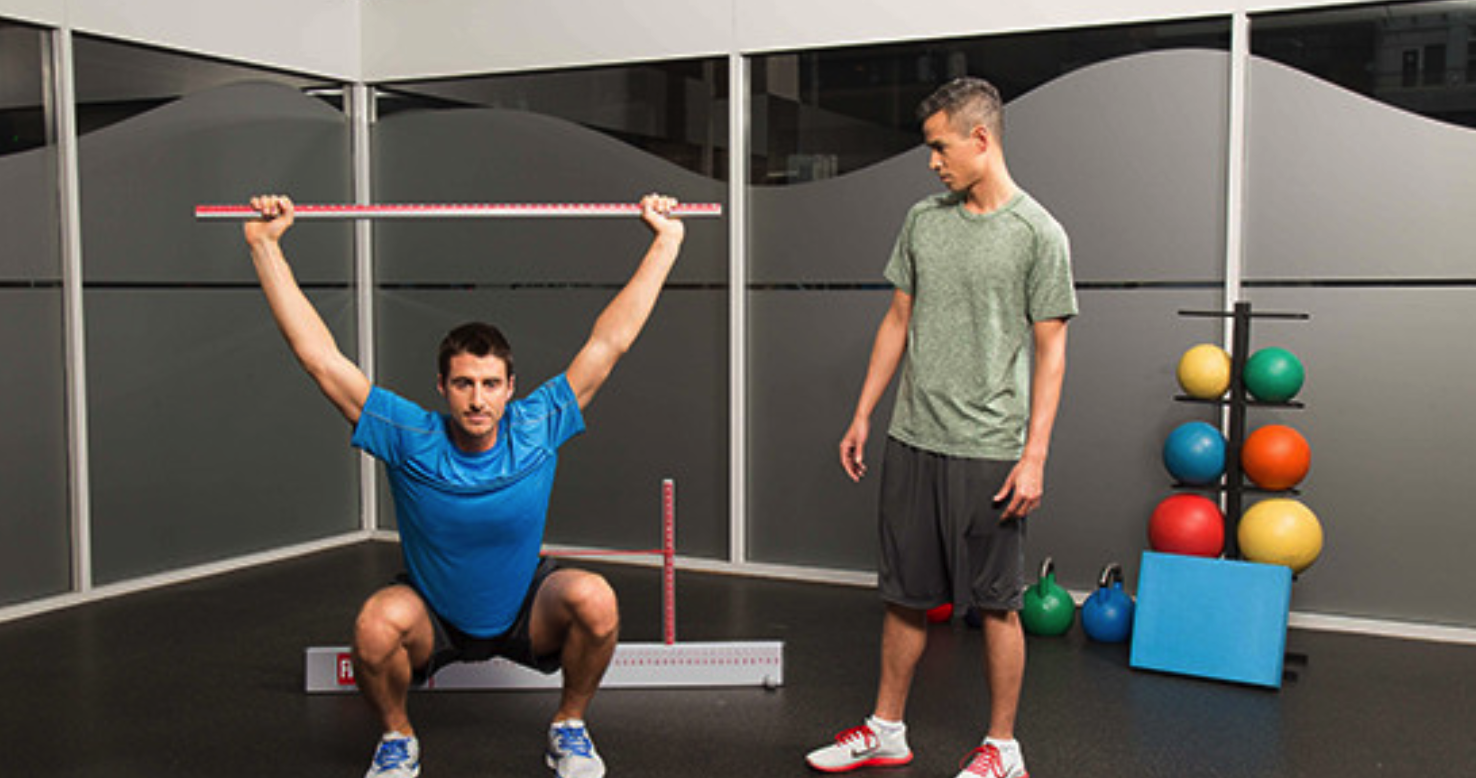Movement ability is often overlooked prior to fitness and sports performance training. It’s understandable that some trainers and athletes want to get to work right away with lifting weights, running, training etc., but if the goal is to improve a clients fitness, or improve an athletes sports performance isn’t it best to evaluate first? How will you know what to focus on for training? What if the client has injury history? How do you assess an athlete properly? These are valid questions and if you are a personal trainer or a strength coach then you’ll want to make sure you assess your client or athlete prior to their prescribed training.
These two great quotes by Gray Cook (FMS) sum up the point everyone should understand. “Moving isn’t important, until you can’t” and “Don’t add strength to dysfunction”. Let’s think about these quotes for a second. The majority of people don’t notice any impingement in their movement until there’s either pain or limits. And most people may not even know their limitations. Take the squat for example, how many of your athletes or clients could actually perform a proper squat prior to training with you? Now add weight (strength) to that limited mobility squat (dysfunction) and you’re setting your athlete or client up for the increased chance of injury. If you’re a personal trainer and you injure your client then your out of a client. If you’re in charge of strength and conditioning for a school and your athlete gets injured in the weight room then you failed them.
Benefits of the Assessment
- From the client's perspective if you can properly assess them before they start training then you’re building credibility. Which really is the beginning of the coach to athlete or coach to client relationship. You’re building trust and showing that you care.
- As the coach you’re using the assessment to properly set them up for the training based on their limitations.
- Creating or using a standard baseline to mark progress that is consistent with every athlete or client that includes the same language for all coaches to understand.
- Decrease liability and reduce injuries.
- Helps clients and athletes easier achieve goals. You’re creating baby steps so that the client is properly introduced to the mechanics of the exercise with proper form.
- The assessment will give you a score of the evaluation so that you can create corrective strategies.
- For the coach to client relationship you’re selling them to invest in your service. Sherri McMillan explains it perfectly “When you take the time to perform an assessment, your ability to demonstrate the value in your services and your ability to influence someone to invest in the training process is greatly enhanced”.
The Assessment
There are a variety of movement assessments and numerous trainers and coaches use their own form of assessment based on their knowledge and education. It’s great as long as you stay consistent with implementation for each client as well as monitor success. The basic movements that are assessed and should be mastered before adding any weight are Pull, Push, Squat, Lunge, Hinge, Rotation and Gait. If you’re client or athlete can’t do any of these basic movements with proper form then it’s solid advice to not add any weight to these movements and develop a plan to correct their deficiencies. Remember, it’s always about the client and the athlete and you’re job is to keep them healthy.
If you want to take it further it’s best to implement FMS. FMS equips fitness, healthcare and performance professionals with actionable steps to help people around the world to first, move well. Then, move often. FMS is really the holy grail of all movement assessments. “As the performance professional, your clients and athletes trust you to improve their overall health and performance. Understanding fundamental movement principles is essential for effectively and efficiently designing a path for success”, per the FMS website. They offer education, certifications, forums, and a library of corrective exercises. I highly recommend FMS for anyone in the personal training or strength and conditioning business.
In Conclusion your athletes and clients need to be assessed. Don’t load weight on someone because they look strong and don’t have an overweight client just run to lose weight. As the coach and trainer you need to understand every individual you train and be aware of their movement deficiencies. You want to keep your clients longer and if you’re coach you want to keep your athletes healthy. Please assess them before training them!





.png?width=110&name=Listing%20Image-basketball%20ladder%20drill%20%20(350%20x%20350%20px).png)













